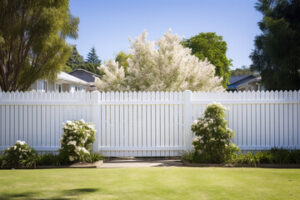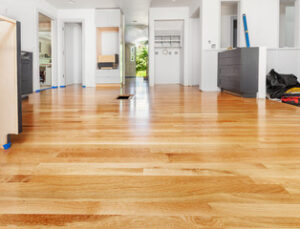In crime, a fence buys stolen goods from a criminal and sells them for profit. Fencing is a severe crime, and law enforcement works hard to tackle it.

Whether you want to prevent criminals from trespassing or children and pets from accidentally wandering into a lake or off of a cliff, a fence can establish your property lines. Contact Fencing Company Charlotte NC now!
Privacy is a precious commodity in the modern world, and a privacy fence can give you back some control over your property. No more nosy neighbors peeking in to see your backyard pool or glancing over at your kids and pets playing in the yard. A privacy fence can also block out unwanted noise, like traffic and voices from the street or nearby homes.
While a privacy fence can be a beautiful addition to any home and landscape, it is important that you choose one that balances beauty and functionality. Adding decorative elements to your privacy fence can help enhance its aesthetic without compromising its primary purpose. For example, using wrought iron post caps can add style and flair to a standard wood or vinyl fence. They also protect the tops of your fence posts from damage and weather.
Another way to add privacy and style to your privacy fence is by using lattice panels on the top. Adding these decorative elements can increase the height of your fence from the standard six feet, but still allow airflow and light into your yard. This is a great option for homeowners who want to increase their privacy, but don’t want to spend the money on a higher-end fence.
A privacy fence can also block out wind and sunlight, which can save you money on your energy bills. In the summer, a privacy fence can keep your outdoor space cooler by blocking out the hot sun and in the winter, a privacy fence can block cold winds from blowing through your home.
Many local governments and homeowner’s associations have rules governing the type of fence that you can install, including the height and materials used. Before starting construction, make sure you review any guidelines in your area to avoid potential problems. In addition, some areas require a permit before building a fence taller than six feet. A permit can delay the installation process and increase your overall cost. Finally, if your home is located near utility lines, it’s important to contact the company that runs them to find out where the lines are buried. This will help you avoid digging into or cutting into power lines that could cause a costly outage.
Security
A fence offers protection against things like burglars, wild animals, and loud neighbors. It is also a great way to keep people from entering your property without your permission. Fences are also often used to protect against high winds. This is because wind can damage a home or business, especially if it has to push through something taller than your yard. A fence can block the wind and prevent it from getting through the wall.
Fences can also protect us from the effects of sunlight, such as UV rays. These rays can damage the skin, so it is important to protect yourself from them when spending time outside. Fences can block the sun’s harmful rays and help you enjoy your outdoor space without worrying about the damage they may cause.
The term fence can also be used to describe a criminal who buys and sells stolen goods. This activity is known as fencing and it is a significant part of many criminal enterprises. The prices that fences pay thieves depend on norms and legitimate market rates for the items in question, as well as the thief’s reputation. Habitual thieves who are known to police may also face a higher risk of being caught if they attempt to sell their stolen goods directly to buyers, so they often establish clandestine relationships with fences in other locales to avoid this risk.
When installing a fence, most homeowners focus on the panels that will best suit their home’s style and desired level of privacy. However, the integrity and longevity of a fence hinges on the stability of the posts that support it. Without proper protection, these posts can become damaged or even collapse. Quality Full Post Protectors from Fence Armor can help ensure that your fence will stand the test of time and resist rot, water, and other damaging environmental elements.
One of the most effective ways to protect wood fence posts from moisture is by staining them. Stains contain:
- Pigments that add color.
- Resins that protect the wood from moisture.
- Additives that improve the finish performance of the stain.
Regular maintenance and reapplication of stain will safeguard your fence against moisture and UV rays and extend its lifespan.
Weed Control
Weeds compete with crop plants for sunlight, water and nutrients. Without control, they can take over entire fields, hampering the harvest. Farmers use a combination of chemical and nonchemical methods to achieve effective weed control. Nonchemical methods include cultivation, use of mulches and physical removal of weeds by hand. Chemical weed control involves the application of herbicides to the soil or weeds, killing them with a targeted agent. Many herbicides are designed to be specific to the weed species they target, so they cause no harm to the crop plants. The goal of chemical weed control is to kill the weeds before they produce seed and spread to other areas of the field.
Weed control is most effective when used at the beginning of a growing season, before the weeds have a chance to establish themselves and grow large. Weeds can quickly produce thousands of seeds, which will then enter the soil and become a problem for future crops. The weeds may also serve as a host for crop diseases and pests. Weeds should be removed regularly to prevent the production of seeds.
Cultivation is one of the most important preventive weed control methods. It should be done at a time when it is most effective, based on the stage of weed growth and the stage of crop development. Cultivation is best done using equipment that can operate in close proximity to the crop.
Herbicides are the most common tool used in chemical weed control. They are applied to the soil surface or transported with plant roots to metabolic sites, where they inhibit photosynthesis. There are a wide variety of chemicals available for this purpose. Newer herbicides have fewer side effects and less environmental impact than older chemicals.
A chemical called glyphosate is the most widely used herbicide in the world.
It’s important to find a local fence company that provides professional maintenance services at an affordable price. When evaluating prospective companies, be sure to ask about their licensing and insurance coverage, as well as request references from past clients. These factors can give you a better idea of the type of work they perform and the level of customer service they provide. A reliable fence company will have the experience and expertise necessary to provide you with the best maintenance services for your fencing needs. In addition to providing quality maintenance, a trustworthy fence company will also offer installation services for new fencing and replacement of existing structures.
A well-installed fence is an important investment in the security and curb appeal of your property. However, over time, even the best-made fences will begin to show signs of wear and tear. This may mean discoloration, rotting, or warping. Depending on the severity of the damage, you may need to have it repaired or replaced entirely. In some cases, a full fence replacement is more cost-effective than simply replacing damaged panels.
Before you hire a fencing contractor:
- Make sure that they have the proper licensing and insurance. You can usually verify this information by entering the contractor’s name into a search engine or asking them directly.
- Check references and get quotes from several different companies to compare prices.
- Beware of fly-by-night contractors who change their names to avoid bad reviews.
In addition to ensuring that the contractor has the right credentials, it’s also important to choose quality materials for your fence. For instance, if you’re building a wood fence, Mr. Meza recommends choosing kiln-dried redwood or cedar instead of pressure-treated lumber. He also recommends choosing galvanized nails rather than staples to ensure that the nail heads hold up over time.
You should also make sure that the fence is built completely within your property line. If it’s not, you could face fines and other legal problems. Lastly, it’s important to communicate with your neighbors throughout the process so that everyone is on the same page and understands what’s going on.
The first step in the installation process is to plan where you want your fence. Once you’ve done this, it’s a good idea to call your local utility company to have any underground lines marked before digging your post holes. This will help you avoid hitting any electrical, plumbing, or gas lines, which can cause serious damage and lead to a costly repair bill.
Once the fence is installed, it’s a good idea to fill in the old posts and tamp the ground down to prevent settling. It’s also a good idea to paint or stain the fence to protect it from the elements and prolong its lifespan.


